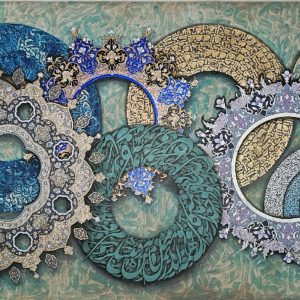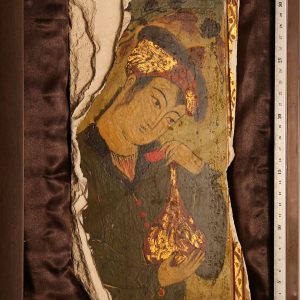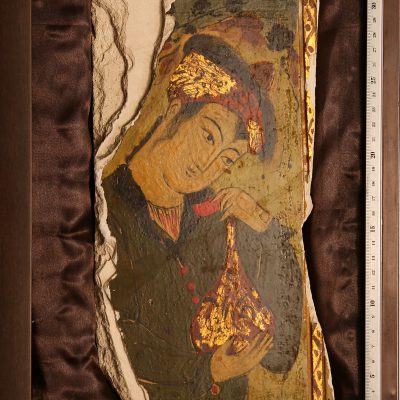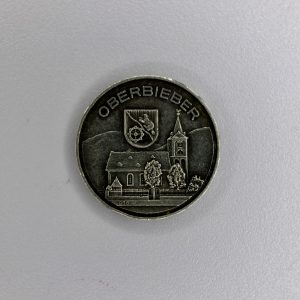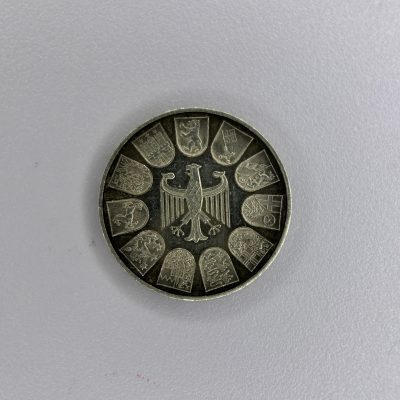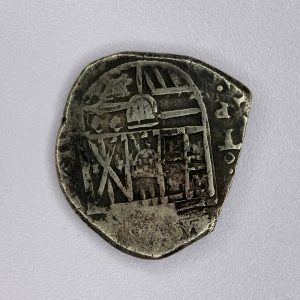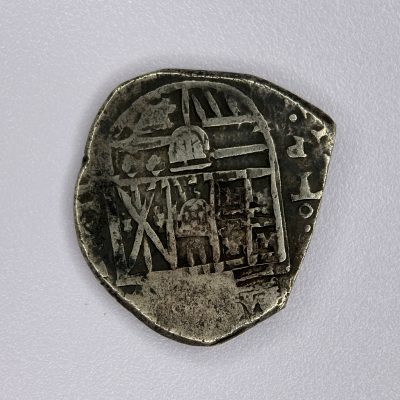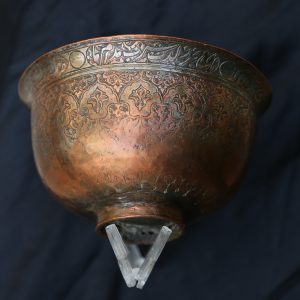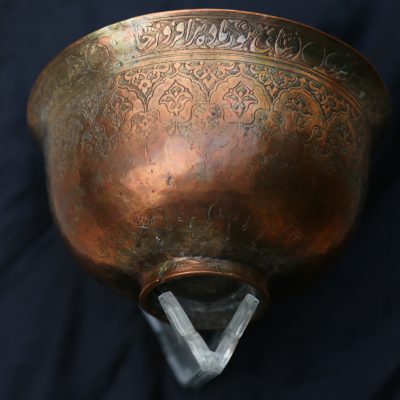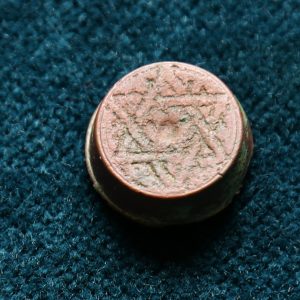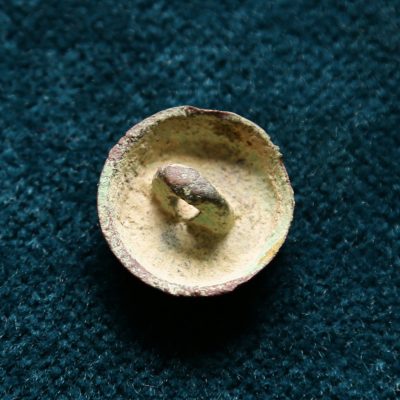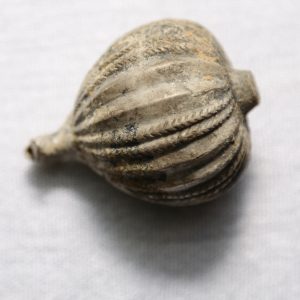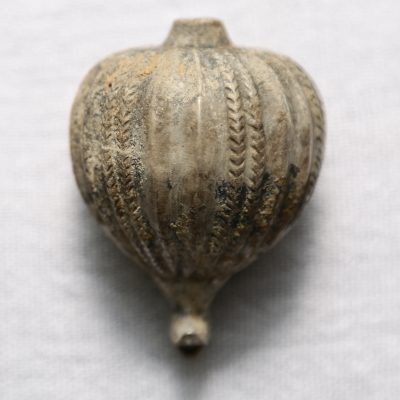Showing 37–43 of 43 results
Filters-
Portrait painting from the Safavid
Quick ViewAuction EndedPortrait painting from the Safavid dynasty, created by the distinguished artist Mohammad Zaman (fl. 1680 – c. 1700)
These two portrait paintings are matching portraits from a magnificent building dating back to the Safavid era (around the 10th century AH or the 16th century AD) in Isfahan, which were carved from plaster walls using a chisel and the surrounding area cleared to frame the paintings.
In the first painting, which is a portrait facing to the left, restoration has been done at several points due to peeling and color running from the plaster background. The painting technique involved outlining first and then coloring, and for the color, gold plating is also used in some parts.
Due to the style of work, these two works are attributed to “Mohammad Zaman”, the famous painter of the Safavid era. Most of Mohammad Zaman’s paintings were done in the Safavid court and on the plastered walls of palaces and court buildings, but the paintings on canvas of this renowned painter, done in the “FarangiSāzi” style also found in museums outside of Iran.
-
Safavid engraved copper container
Quick View$80,000.00This is a Safavid engraved copper container. The term “K’abdar” in Dehkhoda’s dictionary is defined as: A copper bowl or cup with a copper ring underneath it instead of a base. This container has been beautifully calligraphed with the name of the owner alongside two couplets or four lines of Hafez’s poetry, and very exquisite decorative motifs have been meticulously engraved from top to bottom in harmony with the shape and size of the container, arranged from large to small. This type of motif, displayed in intricate engravings, and the “K’abdar” container, is specific to the Safavid era’s art and indicates the antiquity and origin of the container to the Safavid period.
Since the antiquity of the container spans about four hundred years and has been in use during various periods, gradually, the bottom part of the container and the area where it was held have worn out, and the engraved decorations have become shallow and partially erased. However, with a little attention, traces of it can still be distinguished.
Over the course of these four hundred years, naturally, this container has had many owners, but the name of the original owner is calligraphed on its rim and continues onto Hafez’s poetry, later, another owner of the container erased the name of the original owner and unfortunately inscribed their own name with poor handwriting, as follows:
Owned by Haj Ali Mohammad………..
Later, after the dot (the erased part), Haj Shafie Hamzavi or something similar is engraved.
The diameter of the opening of the vessel is 17 centimeters, or in other words, the diameter of the vessel’s opening fits within a square with dimensions of 17×17 centimeters. The height of the vessel is also 9.5 centimeters.
-
Star of David brooch
Quick ViewAuction EndedA Star of David, also known as a Hexagram, symbolizing the Jewish faith, with a history of over 2000 years, is in the form of a bronze (copper alloy) brooch. The circular plate of the brooch is engraved with the Star of David.
The dimensions are 2×2 centimeters (the diameter of the circle is 2 centimeters).
-
Two 1800-year-old pendants in the shape of opium poppy capsules
Quick ViewAuction EndedThese two 1800-year-old pendants are in the shape of poppy capsules, made of silver and in natural dimensions. They feature intricate and beautiful craftsmanship with grooves, indentations, and protrusions expertly created, and some exhibit very beautiful twists and turns.
These poppy capsules are hollow inside and date back to the Sassanian period. They were used as pendants and necklaces, serving as authentic evidence of the ancient cultivation of poppies and the use of opium.Dimensions: 4.5×6 centimeters, circumference of the circle: 14 centimeters.



